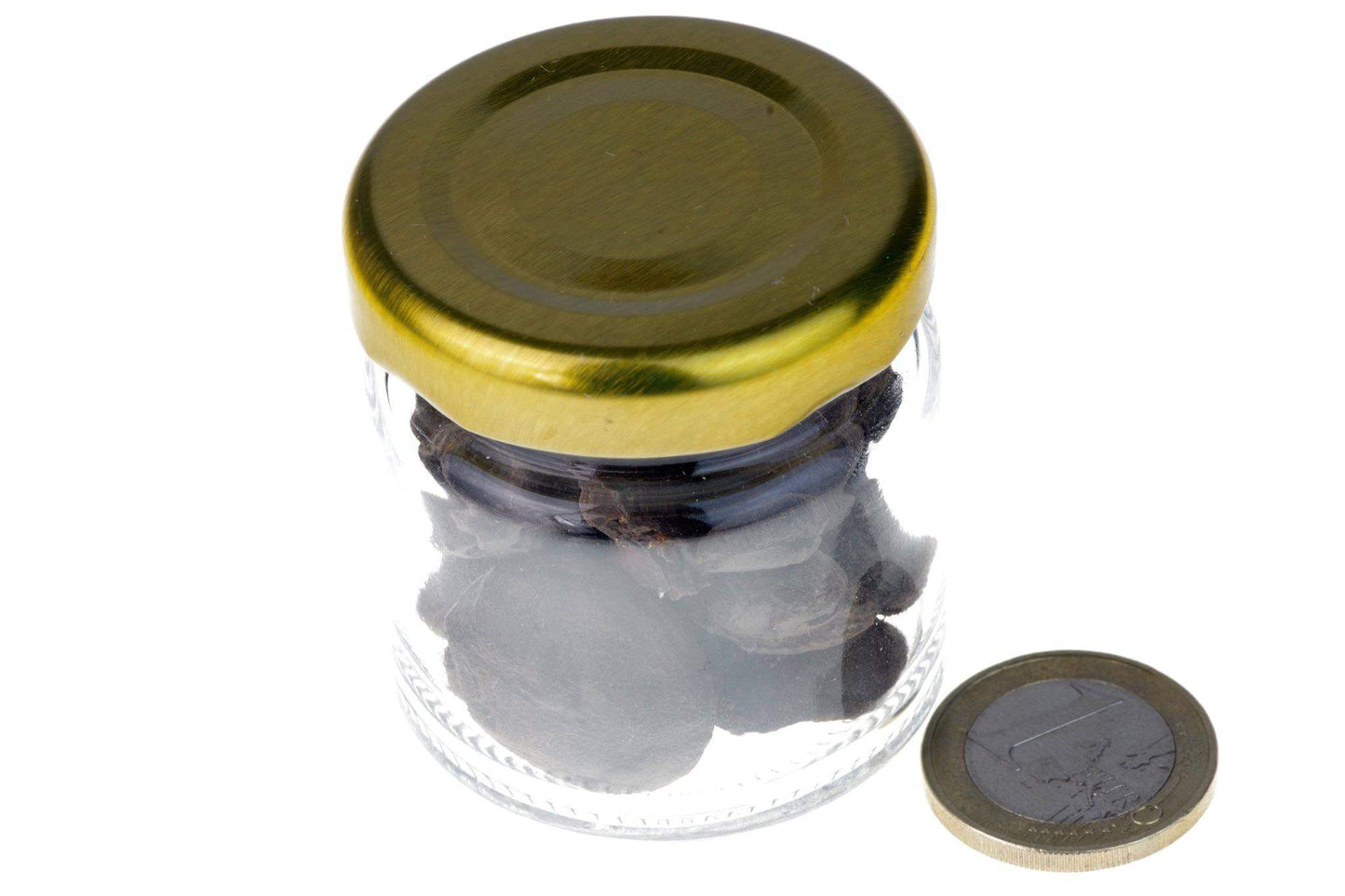www.Crystals.eu
Brachiopoda – Bottled
Brachiopoda – Bottled
픽업 사용 가능 여부를 로드할 수 없습니다.
Brachiopods: Ancient Marine Marvels
Brachiopods, also known as Brachiopoda, are a fascinating phylum of marine animals that have thrived for over half a billion years. Distinguished by their unique shell structure and symmetry, these organisms offer invaluable insights into the evolutionary history of marine life and serve as important indicators of environmental health.
Characteristics
-
Valves and Shell Structure:
Unlike bivalve mollusks, whose shells are typically symmetrical on either side, brachiopods possess two valves that are different in shape and size—one dorsal (upper) and one ventral (lower). These valves are hinged at the rear, with internal muscles controlling their opening and closing. This asymmetrical arrangement, when viewed from the front, sets brachiopods apart from their molluscan cousins. -
Lophophore:
A distinctive feature of brachiopods is their lophophore—a specialized feeding organ composed of a ring of ciliated tentacles surrounding the mouth. This organ filters microscopic particles and plankton from the water, playing a crucial role in the brachiopod’s feeding process. -
Attachment Mechanism:
Many brachiopods anchor themselves to substrates using a stalk-like structure known as a pedicle. This adaptation enables them to remain securely attached in various marine environments, from rocky seabeds to sediment-rich areas. -
Habitat:
Brachiopods are predominantly found in cold, low-light marine environments. Their presence in these areas makes them sensitive indicators of water quality and environmental conditions.
Classification and Evolution
-
Extant Groups:
There are over 400 living species of brachiopods, primarily categorized into two main classes: - Inarticulata: These brachiopods lack a tooth-and-socket hinge, resulting in a more flexible shell structure.
- Articulata: Characterized by a tooth-and-socket hinge, these species have a more rigid and defined shell structure.
-
Fossil Record:
Brachiopods boast an extensive fossil record, particularly from the Paleozoic Era when they were far more diverse and abundant. Their fossils date back to the early Cambrian period, around 540 million years ago, offering a rich archive for studying ancient marine ecosystems and evolutionary trends. -
Evolutionary Significance:
The long history of brachiopods makes them invaluable for understanding evolutionary biology. Their evolutionary adaptations and responses to past environmental changes provide critical insights into how marine organisms have evolved over geological time scales.
Ecology
-
Diet and Feeding:
As filter feeders, brachiopods capture tiny organisms and organic particles from the water, playing a significant role in the marine food web. Their efficient feeding mechanism, facilitated by the lophophore, ensures that they contribute to the balance of their ecosystems. -
Predators and Environmental Role:
Brachiopods are preyed upon by various marine creatures, including starfish and fish, which highlights their role in the food chain. Additionally, their sensitivity to environmental changes makes them reliable indicators of water quality and temperature, providing essential data for marine ecologists.
Brachiopods are not only a window into the distant past but also a testament to the resilience and adaptability of marine life. Their unique shell structure, ancient origins, and significant role in modern marine ecosystems underscore their importance in both evolutionary biology and environmental monitoring. For anyone interested in paleontology, marine biology, or the rich diversity of life on Earth, brachiopods offer a captivating glimpse into the complex tapestry of nature’s history.
Whether admired for their scientific value or their natural beauty, brachiopods continue to inspire and inform, reminding us of the intricate and ever-evolving story of life on our planet.
Crystal and gemstone meanings, Detailed Brachiopoda properties
Share



















